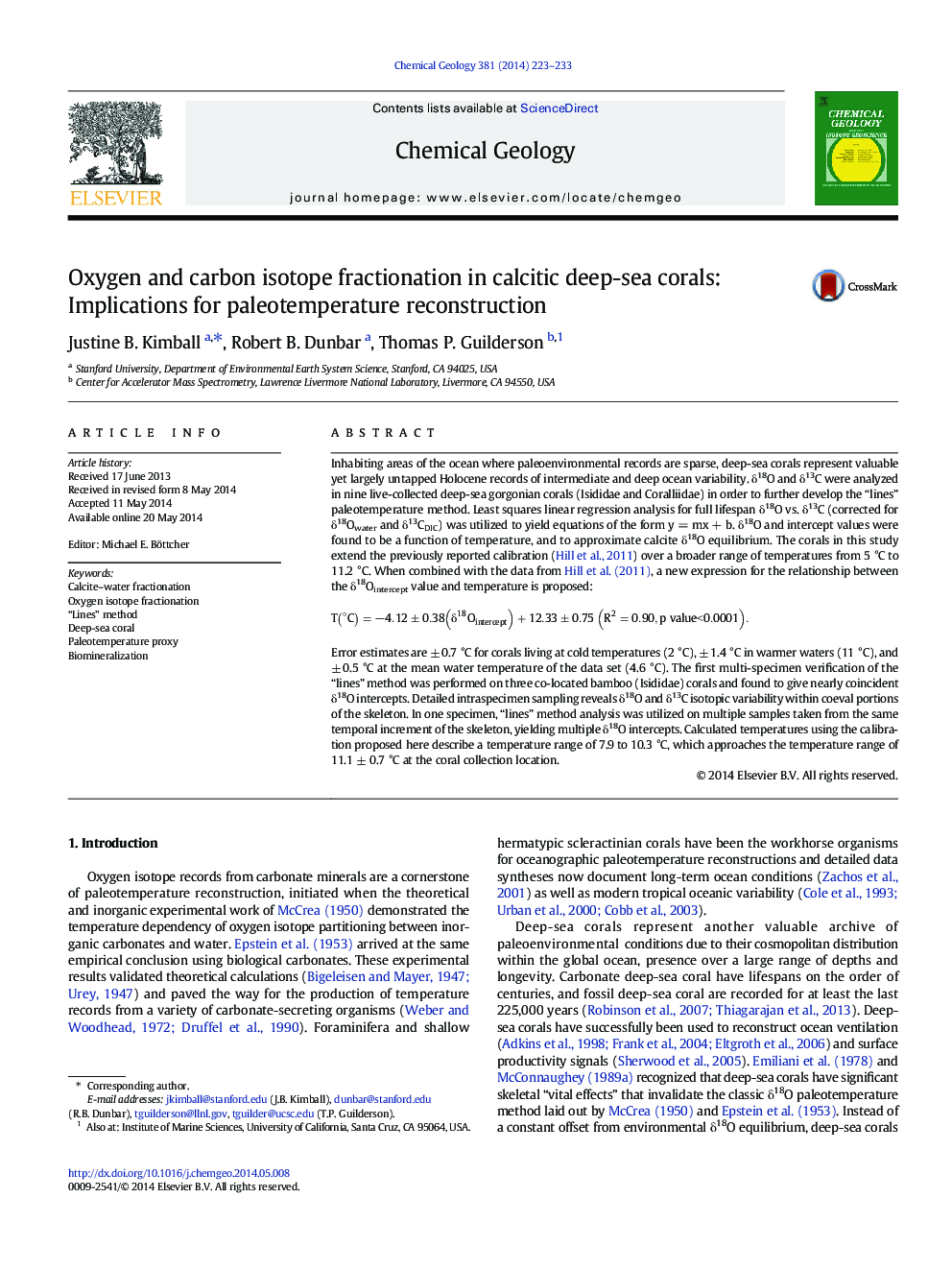| Article ID | Journal | Published Year | Pages | File Type |
|---|---|---|---|---|
| 6436620 | Chemical Geology | 2014 | 11 Pages |
â¢We explore stable carbon and oxygen trends in calcitic deep-sea gorgonian corals.â¢We analyze results by “lines” method and find that calcite δ18O equilibrium can be approximated.â¢We extend the previously calibrated gorgonian “lines” paleotemperature method from 5 °C to 11.2 °C.â¢Intraspecimen results accurately reproduce environmental temperature variability.
Inhabiting areas of the ocean where paleoenvironmental records are sparse, deep-sea corals represent valuable yet largely untapped Holocene records of intermediate and deep ocean variability. δ18O and δ13C were analyzed in nine live-collected deep-sea gorgonian corals (Isididae and Coralliidae) in order to further develop the “lines” paleotemperature method. Least squares linear regression analysis for full lifespan δ18O vs. δ13C (corrected for δ18Owater and δ13CDIC) was utilized to yield equations of the form y = mx + b. δ18O and intercept values were found to be a function of temperature, and to approximate calcite δ18O equilibrium. The corals in this study extend the previously reported calibration (Hill et al., 2011) over a broader range of temperatures from 5 °C to 11.2 °C. When combined with the data from Hill et al. (2011), a new expression for the relationship between the δ18Ointercept value and temperature is proposed:T°C=â4.12±0.38δ18Ointercept+12.33±0.75R2=0.90,pvalue<0.0001.Error estimates are ± 0.7 °C for corals living at cold temperatures (2 °C), ± 1.4 °C in warmer waters (11 °C), and ± 0.5 °C at the mean water temperature of the data set (4.6 °C). The first multi-specimen verification of the “lines” method was performed on three co-located bamboo (Isididae) corals and found to give nearly coincident δ18O intercepts. Detailed intraspecimen sampling reveals δ18O and δ13C isotopic variability within coeval portions of the skeleton. In one specimen, “lines” method analysis was utilized on multiple samples taken from the same temporal increment of the skeleton, yielding multiple δ18O intercepts. Calculated temperatures using the calibration proposed here describe a temperature range of 7.9 to 10.3 °C, which approaches the temperature range of 11.1 ± 0.7 °C at the coral collection location.
